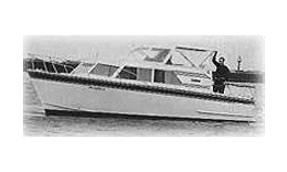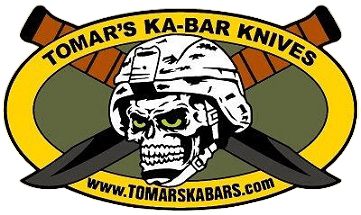The Story of KA-BAR Knives
Roots of the cutlery business in Western New York
Over 200 years ago, the U.S. cutlery industry began in New England when a group of cutlers from the renowned Sheffield Cutlery Industry in England established small factories. These skilled artisans passed down their expertise and commitment to quality, enabling the industry to expand and gradually move westward. By the late 1800s, a community of cutlers had settled in Western New York and Northern Pennsylvania.
Today, the cutlery companies located in the Olean, Franklinville, Springville, Bradford, and Ellicottville areas can all trace their origins back to the migration of these cutlers to Little Valley and Cattaraugus in the late 1800s. Initially, this relatively compact region was home to over 30 knife companies. However, withstanding market fluctuations and economic challenges, only a handful of resilient companies remain.
KA-BAR Knives, Inc. stands proud as one of the few remaining cutlery companies in the Western New York region.


KA-BAR's Historical Lineage
The history of KA-BAR began in 1897 when a group of 38 individuals established the Tidioute Cutlery Company to manufacture and sell cutlery. However, the production and sales of cutlery did not begin until 1898, which is considered the founding year of KA-BAR.
Facing financial difficulties like many knife manufacturers at the time, the Tidioute Cutlery Company was dissolved in 1900. In 1902, Wallace R. Brown, an influential figure in the industry, purchased the company’s assets. Under Brown’s leadership, a new corporation called the Union Razor Company was formed in March of the same year.
Realizing that the name Union Razor Company was no longer suited to its expanding product line, the company changed its name to Union Cutlery Company on January 25, 1909.
In 1910, the City of Olean, New York, proposed that Union Cutlery relocate its operations there. Within a year, the company decided to move to Olean. A new incorporation was established in Olean, New York, while the original Tidioute, Pennsylvania plant was closed down. By December 1911, operations were fully underway at the new location on North Ninth Street in Olean.
During the 1920s, as Union Cutlery grew, there was a period of mixed markings on their knives, with different trademarks such as OLCUT, KEENWELL, and the now-iconic KA-BAR being adopted on both the older Union Razor knives and newer Union Cutlery knives.
How KA-BAR became KA-BAR
The KA-BAR trademark quickly gained recognition and earned a strong reputation after its introduction. Adopting the KA-BAR name is credited to a letter from a fur trapper, which proved significant for the company.
In the letter, written in rough English, the trapper recounted using his knife to kill a wounded bear that had attacked him when his gun jammed. He expressed gratitude for the company’s high-quality product and described using his knife to “kill a bar.” Due to the trapper’s handwriting, which appeared as “ka bar,” the company decided to adapt and adopt it as their trademark, KA-BAR.


Dan Brown's leadership: World War II to 1960
In 1924, Wallace Brown, who had overseen the successful years of Union Razor and Union Cutlery Company, passed away. His brother, Emerson Brown, briefly took over but was soon replaced by Danforth Brown in 1931, the son of Wallace R. Brown.
Danforth Brown faced the challenge of supplying the military during World War II when he became President of Union Cutlery Company. They submitted a KA-BAR branded knife to the U.S. Marine Corps, although the initial design was unsatisfactory. However, an improved version was accepted and issued as the standard fighting/utility knife in 1945.
The dependable serviceability of this knife led other branches of the armed services to adopt it, and Union Cutlery produced over a million knives during the war. These knives, manufactured under different trademarks, were affectionately referred to as “KA-BARS” due to their quality and reliance on them for various tasks.
Other military knives, including the Tl29 Electrician’s Knife and a rigging knife, were also produced by KA-BAR during World War II. Similar versions of the KA-BAR knife were used in subsequent conflicts.
In 1952, the company decided to change its corporate name to KA-BAR Cutlery, Inc., reflecting the widespread recognition of the KA-BAR name.
Under Danforth Brown’s leadership, one challenge was an unsuccessful attempt to move manufacturing operations to Dawsonville, Georgia, in 1954.
This relocation only lasted a year before they regrouped back in Olean at the original factory site. Fortunately, the retreat did not cause significant disruption to production, as the manufacturing facilities in the Olean plant remained intact.
Reviving the Brand
Danforth Brown passed away in March of 1960, leading to several company ownership changes. The Brown family sold KA-BAR to two businessmen in 1961, who then sold it to a group of entrepreneurs, which later caused the company to file for Chapter 11 bankruptcy.
Efforts to reorganize were unsuccessful, resulting in the company’s liquidation. With the goal of reopening the business, Robinson Knife Company acquired the company’s assets but later sold the KA-BAR operations to Cole National Corporation in Cleveland, Ohio, in 1966.
Cole, already involved in the cutlery business and known for aggressive marketing, began rebuilding the KA-BAR brand and product line. They reorganized the entire product line, focusing on folding knives and a line of fixed-blade hunting knives with KA-BAR’s signature leather handles.
In 1975, KA-BAR established a special Collectors’ Division to produce significant and commemorative knives, recreate famous antique KA-BAR knives, and support knife collecting as a hobby. The first knife produced by the Collectors Club was a response to public demand for the reintroduction of the knife made famous in World War II.

The Club released a limited-edition full-dress version of the U.S.M.C. Fighting/Utility Knife in 1976 to commemorate 200 years of service by the United States Marine Corps. It was a beautifully etched and gold-filled fixed-blade fighter made to the exact specifications of the original knife. The U.S.M.C. Commemorative was highly popular, leading the company to bring back the knife in its standard issue form for regular production a year later.
However, Cole National Corporation encountered business difficulties and filed for bankruptcy in 1982. During the liquidation process, the KA-BAR product line was purchased by American Consumer Products and eventually relocated to Solon, Ohio. American Consumer Products, already involved in the cutlery business, successfully rebuilt and operated the business until June 1996, when the KA-BAR product line and assets were sold to Alcas Corporation of Olean, New York.

Alcas Corporation and the return to Western New York
Alcas Corporation was already familiar with the cutlery business and had previously manufactured knives for KA-BAR, including the U.S.M.C. Fighting/Utility Knife. In June 1996, Alcas acquired the assets of KA-BAR and relocated them to their headquarters in Olean, New York. Operations resumed that year, with KA-BAR manufacturing their knives once again under the new parent corporation.
In 1997, there were further changes for KA-BAR. They moved their warehousing, customer service operations, and executive offices to their current location at 1125 East State Street in Olean. Additionally, the company expanded its national product distribution channels by partnering with five manufacturing representative firms throughout the United States. They also introduced new variations of the Original USMC Fighting/Utility Knife and Next Generation Knife. This included the addition of two One-Hand Opening Lockbacks and a line of knives known as the Black KA-BARs.
In 1998, KA-BAR celebrated its 100th anniversary. Throughout its history, the company has faced various challenges and managed to overcome them. Looking ahead to the next 100 years, KA-BAR anticipates even faster changes in the knife industry. Meeting the market’s demands will require embracing new production processes and quicker product development cycles to meet customer expectations for innovation.
Thankfully, KA-BAR is well-equipped to tackle these challenges due to the financial, product development, manufacturing, and management resources provided by the Alcas family of companies.
